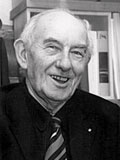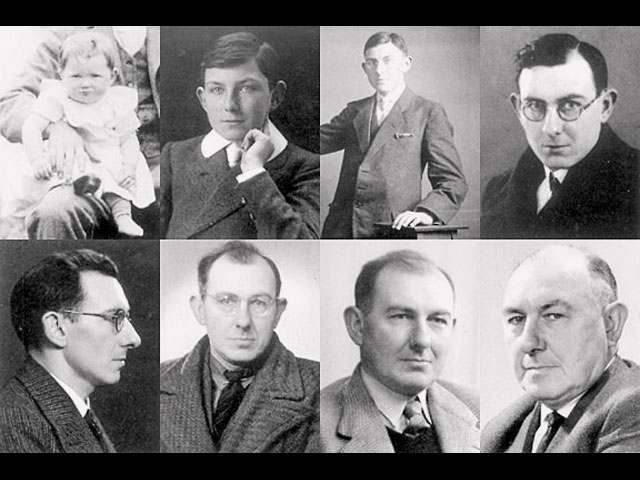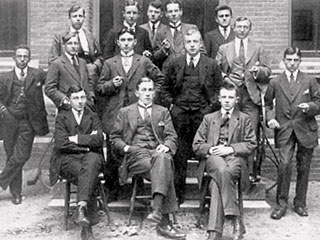Edmond Hustinx

Edmond Hustinx – no ordinary Maecenas
Edmond Hustinx (1898–1984) studied medicine in Amsterdam, but did not complete these studies. During his student days he also attended lectures in other disciplines, including philosophy and chemistry, and he always had great interest in developments in science in general. He always promoted the advent of scientific education in his native city of Maastricht.
In the artistic area Edmond Hustinx was an amateur, in the positive sense of the word. He considered performing music, filming, photographing and painting as forms of relaxation for arriving at new ideas. He received his first drawing lesson from Eugène Lücker in 1915 as a student at the Canisius College in Nijmegen. A beautiful aquarelle still life of a wine bottle and cigarette box dates from this period, as well as a series of pen and ink drawings of bird studies. Between 1923 and 1927 he made a remarkable series of pastel drawings of cityscapes and landscapes in which the modest use of colour and the powerful lines have a very personal character. Drawing by hand disappeared in the early 1930s when he began painting using oils and thus began imitating the style of Limburg artists, whether consciously or not. Edmond Hustinx was no ordinary person. He was unmarried and lived together with three unmarried brothers and his unmarried sister Henriëtte in the parental home on the Looiersgracht, which was far from opulent. He lived in a world in which he had created a role for himself which impressed some people and amused others. When he began talking about himself, it was not always clear for some where reality ended and fantasy began. But, again and again, he surprised his circle of acquaintances with his original opinions and practical forays into different social areas. Also remarkable was his courage in trying to actually implement new ideas. As a small manufacturer, Hustinx was proud to be able to do more and earlier to promote the arts and sciences than many a large industry. When he awarded prizes or had them awarded to first-class artists or scientists a little of their talents rubbed off on him. Anyone who knocked on his door for support in realising a cultural activity seldom knocked in vain.

1900 1912 1916 1930
1937 1947 1951 1962

Canisius College in Nijmegen, sitting first from the left.